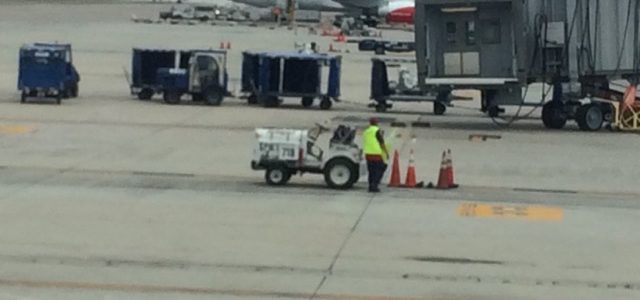
NextGen: Saving Fuel, Money and YOUR Time
Washington Dulles International Airport (IAD) and other Washington, D.C. area airports are undergoing a technological revolution to replace 1940s technology and propel your next flight into the 21st century. The Federal Aviation Administration and aviation community have a joint program to modernize the airways. Soon radio technology will be replaced by more precise GPS in order to modernize the National Airspace System. The program is called “NextGen,” and it consists of equipment and procedures for getting your plane from gate to gate. This systemic improvement will result in seconds saved, gallons of jet fuel not wasted, and CO2 emissions prevented. However, as pointed out in an article in Time magazine, the push to “Modernize the Skies” may add up to be “the most comprehensive investment in the backbone of the nation’s skies in history.”
For example, instead of leaving miles of space between airline jets, the newer GPS system will allow for more precise jet placement and spacing. The new NextGen system gives flight controllers updates every second, instead of every 5-12 seconds, as under the older system. Also, with jets traveling t speeds of 500 mph, this is a huge safety improvement. Flights can now be safely sent off more closely. Furthermore, approach and landing protocols have been updated to use the GPS system, which shaves minutes off flights. For a snapshot on taxi times at Washington Dulles International Airport (“IAD”), click here for the DC area airport’s NextGen Scorecard.
This NextGen technology may also clear the way for autonomous flights, addressing the issue of drones getting in the day of passenger aircraft (or each other!). With over 21 million passengers per year, this increase in safety and efficiency will pay huge dividends. Dulles Airport is in the top 25 busiest airports in North America, both with regard to passenger traffic AND cargo volume. Furthermore, one FAA study estimates the benefits of the NextGen program to be $160.6 billion through the year 2030, including a reduction in the use of jet fuel in the amount of 2.8 billion gallons. Less time sitting on the runway or holding in the air saves airfreight companies money. Shaving minutes off flight times for commercial passengers through the use of the NextGen system not only translates into money saved for the airlines, but benefits passengers as well. Saving time, money and the planet while increasing safety are the reasons that the NextGen system seems to be a success on all fronts.
